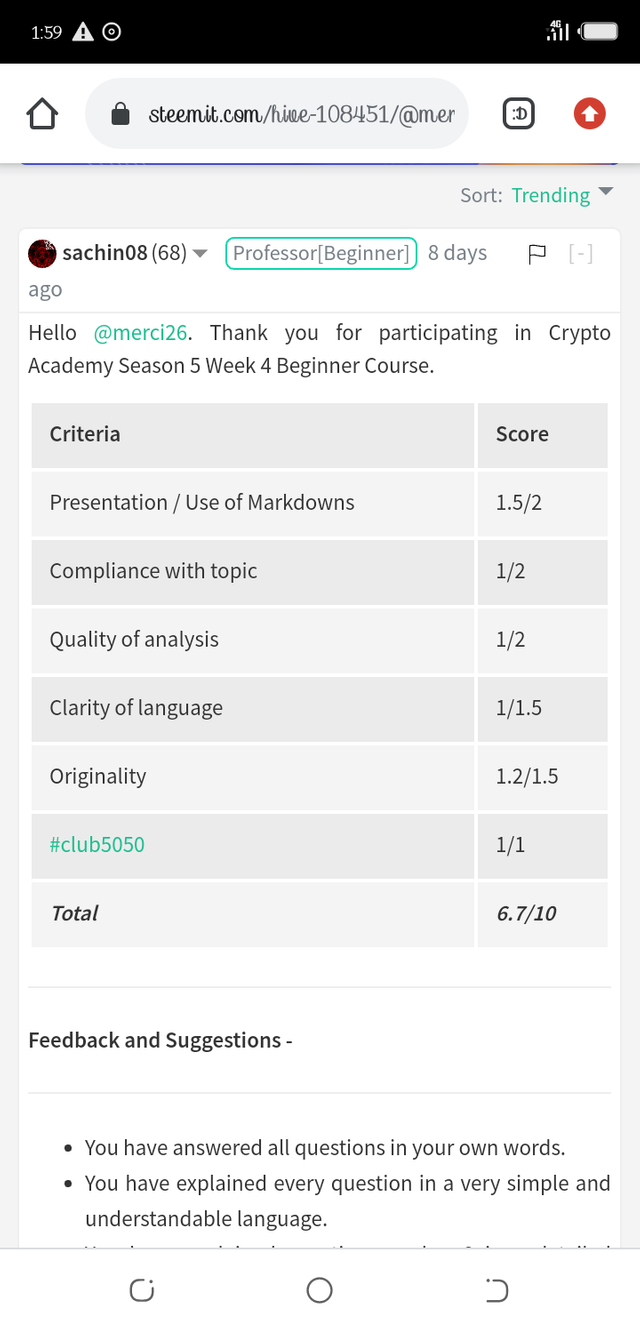REPOST: Trading using Wedge Pattern-Crypto Academy/s5W5- Homework post for @sachin08
Repost of my task that was not curated link

designed using canva

Explain Wedge Pattern in your own word
The study and use of candlesticks, charts, and patterns to analyze and predict market movements and behaviour is commonly used by crypto-traders. One of the spotlights some traders’ lookouts for while trading is the Wedge Pattern.
Wedge Pattern:
A wedge pattern is a candlestick or market behaviour that usually occur between 10-50 candle periods, indicating higher highs, higher lows or lower highs and lower lows forming a triangular shape when a line is drawn through them, at the support and resistant levels. Wedge pattern is used to signal trend reversals when breakouts happen between any of the trendlines. When a breakout happens in an up-trending market at the resistant trendline it indicates that price is about to change or move in the opposite direction which is also called a ‘Bearish reversal’. When a breakout happens in a downtrend at the supporting trendline it indicates that there will be a trend reversal in the opposite direction also called a ‘Bullish reversal’.

Explain both types of Wedges and How to identify them in detail.
Wedge pattern breakouts give crypto traders signals on when to enter or exit the market after a breakout. Basically, there are two types of wedge patterns that trader’s lookout for while trading cryptocurrencies which are;
a. Rising Wedge
b. Falling Wedge
Rising Wedge:
The rising wedge usually occurs in an uptrend as price decreases in volume. When a rising wedge occurs in a downtrend it usually indicates that there might be a retracement, and the price will continue in its previous direction. A rising wedge helps the trader or technical analyst to predict a reversal in the opposite direction or a bearish reversal.
The trendlines are drawn from the top or resistant level of the chart and from the bottom or supporting level of the chart so that they converge or form a triangular shape pointing upwards in the direction of the trend. When a breakout occurs in the bottom line or supporting level it indicates a bearish reversal or change in price movement in the opposite direction.
HOW TO IDENTIFY A RISING WEDGE
• Draw a resistant line pointing towards the trend and a support line also pointing towards the trend so that they converge or look like a triangle.
• The trendlines must touch more than two candles at the resistance area or top side and at least two at the support or bottom area.
• There is always a reduction in the volume of price during the formation of the rising wedge.
• Breakout volumes could be high or low or below average. A breakout in the support trendline indicates a reversal in the opposite direction also known as the Bearish reversal.
FALLING WEDGE:
A falling wedge usually occurs in a downtrend as the price decrease in volume. a falling wedge happens as a retracement in an uptrend after which the price continues in its original or previous direction. A falling wedge gives the traders signals for a bullish reversal, which often implies that after a breakout price will move in the opposite direction. A falling wedge is formed along with the trend as it decreases in volume, support and the resistant line is drawn, and a breakout in the resistant trendline indicates a bullish reversal.
HOW TO IDENTIFY A FALLING WEDGE
• Draw a resistant line pointing downwards towards the trend, draw a support line also pointing downwards towards the trend so that they converge or forms a triangle pointing in the direction of the trend.
• Make sure the resistant lines touch two or more candles and the support line also touches not less than two candles.
• Ensure that the trendlines are drawn between 10-50 candle periods.
• Reduction in the volume of the price which is one of the main features of trending or wedging patterns.
• Breakouts at the trendlines or resistant trendlines might be heavy, light or below average but still signal a bullish reversal.

Do the breakout of these Wedge Patterns produce False Signals sometimes? If yes, then explain how to filter out these false signals.
All technical analysis and chart patterns are imperfect, so is the formation of a wedge pattern in a crypto chart. These patterns while reliable most of the time may result in the production of false signals, or at best, unreliable. Consider below the formation of a false/unreliable wedge pattern:
In such situations, additional indicators are important tools in the hands to traders to be able to filter out these false signals. Numerous indicators can be used. For example, the Stochastic indicator has been applied to this chart to help confirm signals presented:
Numerous other indicators could be applied to the formation of wedge patterns on a chart to confirm the direction of the trend, these include the VWAP, CMF, Bollinger bands, etc. Traders should be careful not to rely heavily on geometric chart patterns so as not to fall into the trap of the formation of misleading and false signals. Moreover, most professional traders recommend a Fibonacci retracement to be applied to the wedge pattern chart for better chances of success in a trade.

Trading Set-up for Wedge Patterns
- Falling Wedge Patterns
The chart above shows the trading set-up for a falling wedge pattern. From the chart above, on observation of the formation of the falling wedge pattern, as well as the formation of the break out the candle, entry was made below the breakout and stop-loss was placed below the buy order. The take profit zone is clearly marked in green.
- Rising Wedge Patterns
From the 18th-25th of November, the rising wedge pattern began forming and ended in a breakout as shown in the chart above. Following the breakout, trade entry was placed at the bottom, at the tail of the breakout, and stop-loss was placed below this area. Take profit was done at a point higher than the entry point within the newly formed trend.
Conclusion
Rising wedges are a favourite among expert technical traders due to their low risk/high-profit ratio. However, there are various deceptive patterns or patterns masquerading as rising/falling wedges that may be found on asset charts. When a break out occurs, the next goal/new trend is generally accomplished quickly. However, traders must constantly keep in mind that no geometric pattern is 100 per cent dependable, therefore patterns must always be paired with indicators to validate trends.
Cc;
@sachin08







